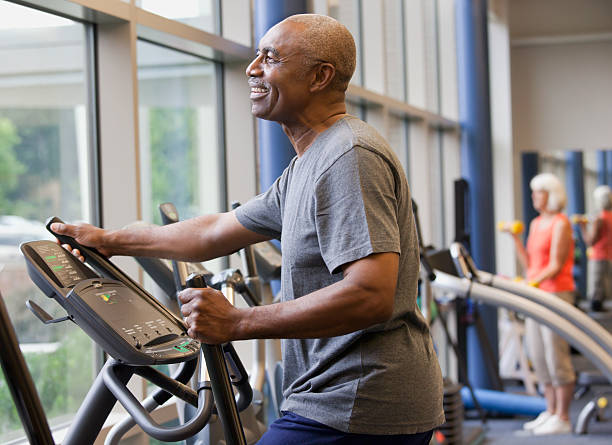When most people hear the word ‘exercise,’ they imagine it only has to do with shedding weight or building muscles. But that is far from the truth, as exercises benefit more than just the body.
Physical exercise plays a vital role in promoting brain health and cognitive function. It not only benefits your body but also provides numerous advantages for your brain. If you engage in the right exercises, you can improve brain function and see an improvement in your cognitive function.
In this article, you will find out some exercises that benefit the brain. Now, here are the best physical exercises for the brain.
8 Best Physical Exercises For The Brain
Below are eight physical exercises that can immensely improve brain health:
1. Aerobic Exercises
Engaging in aerobic exercises, such as running, swimming, dancing, or cycling, increases blood flow and oxygen delivery to the brain. This stimulates the growth of new neurons, strengthens neural connections, and enhances overall cognitive function.
The good thing about aerobic exercises is that they are very easy to do and can be done from anywhere without the need for special equipment.
2. Cardiovascular Workouts
Cardiovascular exercises that elevate your heart rate, such as brisk walking, jogging, or jumping rope, can improve brain health. These exercises increase the production of neurochemicals that support brain growth and enhance memory and learning abilities.
3. Dancing
Dancing is not just a beautiful art form, it is also a fantastic exercise for the brain. It requires coordination, focus, and creativity, all of which stimulate the brain and keep it active.
Dancing has been shown to improve cognitive function and memory, making it a powerful tool for keeping the brain healthy and sharp. As dancers move to the beat of the music, they are engaging multiple areas of the brain, including the motor cortex, somatosensory cortex, basal ganglia, and cerebellum.
This complex interplay of brain regions helps to improve neural connectivity, enhance cognitive function, and even boost mood.
4. High-Intensity Interval Training (HIIT)
HIIT workouts involve alternating periods of intense exercise with short recovery periods. This type of exercise can improve cognitive performance, memory, and attention span.
Some easy examples of HIIT workouts include burpee, lunge, push-up, plank, jump squat, jumping jack, and so on.
5. Strength Training
Unlike what many think, strength training is not just about building muscle and getting stronger, it is also an incredible exercise for the brain.
When you lift weights or perform resistance exercises, you engage multiple areas of the brain, including the prefrontal cortex, hippocampus, and motor cortex.
This complex interplay of brain regions helps to improve neural connectivity, enhance cognitive function, and even boost mood.
Strength or resistance training has been linked to improved cognitive function and memory in older adults, making it a powerful tool for keeping the brain healthy and sharp.
6. Mindful Walking
Walking is a simple exercise that has great benefits. Mindful walking combines the benefits of physical activity with mindfulness meditation.
While walking, focus your attention on your breath, the sensation of your feet hitting the ground, and the sights and sounds around you. This practice can help reduce stress, improve focus, and promote a sense of calm.
7. Team Sports
Engaging in team sports, such as soccer, basketball, or volleyball, not only provides physical exercise but also improves social interaction and cognitive skills.
For example, team sports have been shown to improve social and mental health in young participants, helping to build self-esteem, foster a sense of community, and develop teamwork and cooperation skills.
Playing team sports also requires quick decision-making, strategic thinking, and adaptability, all of which stimulate the brain and keep it active.
8. Outdoor Activities
Engaging in outdoor activities, such as hiking, gardening, or playing a sport, provides the dual advantage of physical exercise and exposure to nature.
Spending time in nature has been linked to improved mood, reduced stress, and enhanced cognitive function. The fresh air, sunlight, and natural surroundings can have a positive impact on brain health.
Conclusion
As you have read, physical exercise is not just essential for keeping our bodies healthy, but it is also crucial for maintaining a sharp and healthy brain. We have discussed how aerobic exercises, cardio workouts, strength training, yoga and team sports can help to improve cognitive function, memory, and overall brain health.
ALSO READ:
- 5 Effective Exercises For Neck And Shoulders Pain
- 5 Best Exercises To Do When Bloated
- 5 Best Exercises To Do After Eating
- 4 Easy Exercises For Building Muscles At Home
- 3 Best Exercises For Reducing Cellulite
- 5 Best Exercises To Do While Intermittent Fasting
- 4 Best Exercises For Bigger Legs At Home
- 5 Simple Exercises To Do When Sick
- 10 Simple Exercises For Staying Fit
- 5 Important Exercise Tips For The Cold Weather
- 8 Simple Exercises To Do When You Wake Up
Collins Nwokolo is a human physiologist, writer and health enthusiast. He loves writing helpful articles on health and fitness, which he enjoys sharing with everyone.










